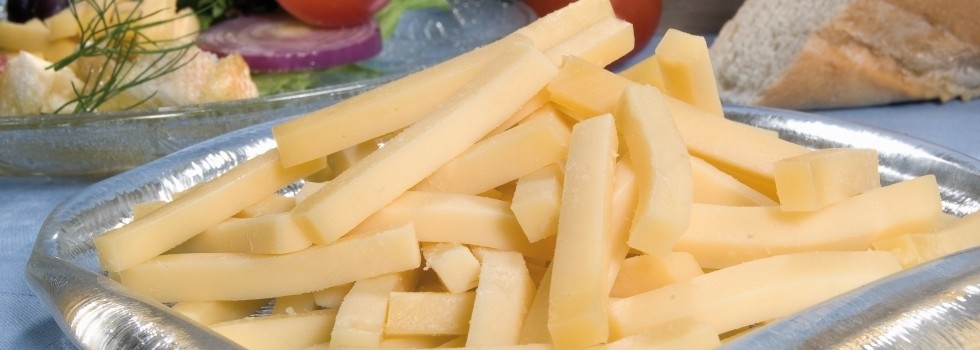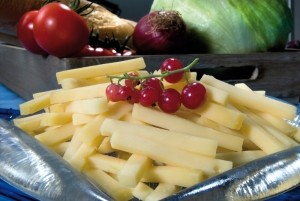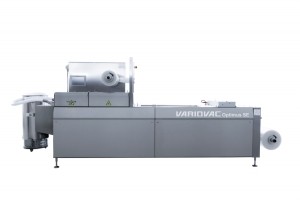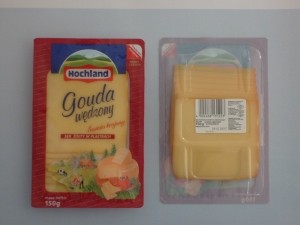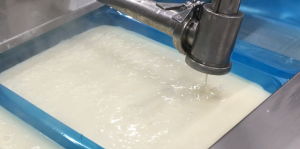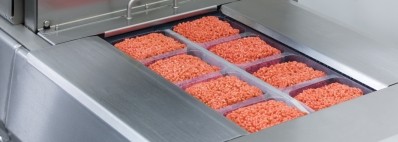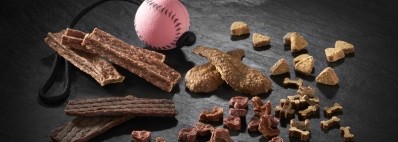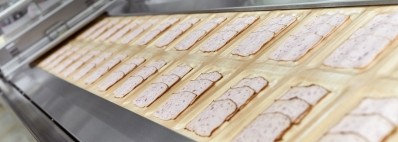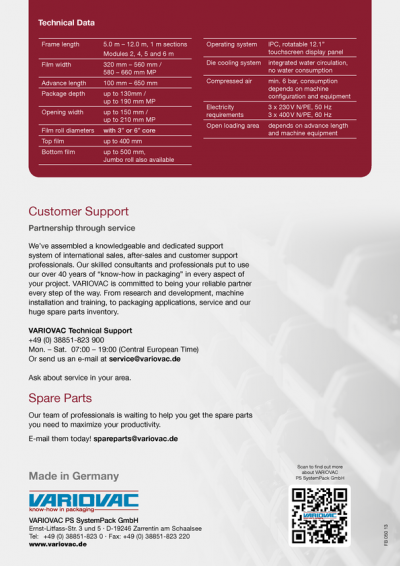Promotional Features
Processing and packing: the challenge of cheese
With so many cheese choices now available in the UK market and consumer demand for variety increasing, processing and packaging products safely and sustainably while reducing cost and waste remains an ongoing challenge. Reiser takes a closer look.
If there were any doubt that UK consumers have a huge affection for cheese, then one only needs to wander down a typical aisle in a supermarket to see the vast array of products on offer.
From soft products, such as goat’s cheese, camembert and brie, to the all-round favourite of cheddar, British consumers’ ongoing love of cheese is reflected in market statistics, with the category adding £49.4m in the past year, and an extra 4.6m kilos going through grocery tills, according to a recent Grocer article.
What’s more, Covid lockdowns over the past two years and increased at-home cooking have played into the hands of cheese manufacturers, as consumers rediscovered the rich variety of products available to them and the versatility of their usage on a multitude of occasions, from snacking to indulgence to hot meals. As a result, the speciality cheese category has grown by 12% year on year, way ahead of everyday cheese (+1.6%) and total cheese (+6.3%), according to figures reported from Kantar in The Grocer’s recent Guide To Cheese. And now, with plant-based options entering the market, the category is becoming even more complex.
The growth of the market and its sheer variety and increasing complexity – from everyday cheeses through to the Christmas specials with festive inclusions, not to mention the growing plant-based alternatives market – pose a challenge to manufacturers, increasingly burdened with the need to provide safer food with a longer shelf life. Cheese is notoriously subject to the risk of microbial contamination and, last year, a comprehensive report on active and intelligent packaging systems for cheese explored the growth of the market and the difficulties involved in processing, depending on the types and varieties of cheese being handled. The report classified them into several categories depending on their moisture content and examined the type of active packaging suited to each one.
Minimising waste
One company very familiar with the issues faced by cheese manufacturers is equipment manufacturer Reiser UK, which helps them process and pack cheese across the spectrum, from soft through to very hard products. The company’s Vemag system through to its Holac Dicers and Variovac and Supervac packaging machines can handle forming, slicing, dicing, shredding and packaging of the popular product.
Richard Watson, managing director at Reiser UK, agrees that the normal challenges of automating cheese processing include hygiene and safety issues, shelf life and presentation. But along with that comes the issue of waste, which can account for up to 10% of the product, with the resulting cost implications for the manufacturer.
“Cheese is not a cheap commodity,” he notes. “We talk to customers about the percentage of waste they are getting from their raw materials, because a lot will still – amazingly – treat end blocks as waste rather than reworking it into a processed or blended product or even do something different with it, such as use it for an inclusion or pizza topping, for example. As the gripper will not finish the end of each block, historically they have thrown it away.”
Because of the range of its equipment, he says, Reiser can work that end piece through a bowl chopper for example, then put it back through the company’s Vemag system to reform it into either a blended cheese or different shape or quality of cheese.
“Halloumi, for example, is a high waste cheese, so we work with a number of customers to make halloumi chips – again from ends they were ordinarily throwing away as they couldn’t see a use for it.
“Or we can reform it into a product they can sell into foodservice where the appearance isn’t as important, because it’s going to be used on a burger or similar product. It’s about working with the customer to see what their particular challenge is and how we can help them to maximise or use all of the product – or simply use it in a different way that they had not thought of to get maximum yield.”
Packaging in balance
Meanwhile, for Mike Carrington, packaging specialist at Reiser, the biggest issue lies in really defining the right pack format for the product that its customers are looking to put on the shelf and how the company balances up the challenges of the continual pressure towards pack weight reduction, while maintaining the shelf life and shelf appeal of the product.
“Ideally, you would minimise the pack weight to get down to a flexible pack, but then that doesn’t give you the protection you want or the shelf life you require,” he notes.
Customers are also looking for good shelf presentation and functionality in terms of reclosable packs, which can demand multilayer materials to achieve this. Yet packaging manufacturers have to balance that functionality with the recyclability of the materials used.
Mostly, a recycled mono rPET is used, he says, but then peelability on the top film (which is not recyclable) is also important.
In terms of packaging, the company’s Variovac horizontal form, fill seal machines produce all types of flexible, semi-rigid and skin packages in shrink film, vacuum packaging, MAP and MLP. The company can also offer the Supervac belt-fed chamber machines for packing both the blocks of cheese and logs that would then go on for slicing. The Supervac is available in a range of sizes to suit small, medium and large producers and, says Carrington, offers very efficient packing of cheese logs for further processing. “We basically want to be able to produce packs in any style the customer needs, be it retail or further processing. We can offer many different options.”
Automation advantages for cheese
Watson acknowledges that the dairy and cheese industry is probably one of the last to embrace fully robotic solutions, but points out that automation has advantages in terms of labour-saving and hygiene. For example, hot-filling mozzarella into a thermoformer (see panel) can reduce the number of people on a production line by up to four. “These are not high throughput lines, so to remove four people from a hot mozzarella line is significant,” he says.
“Then, for example on a pizza line, being able to auto-shred cheese directly over a pizza rather than shredding it into a bucket and somebody having to sprinkle the cheese on to the pizzas also brings in the hygiene factor of not having people down the line touching the product.”
Given the challenges around hygiene for cheese and dairy, the lack of moving parts for stripping down and cleaning is also a bonus. “There’s only two moving parts, whereas on a traditional vacuum filler, there’s probably up to 28 parts to strip down and remove,” he says.
The flexibility of the Vemag system gives the manufacturer an advantage in terms of strength, thanks to its high torque but gentle action, he adds. “You want good back pressure on the product to reform it, but you also need to be gentle, otherwise it becomes quite crumbly if you put too much work into it. The Vemag’s double screw technology has the ability to work from a very soft goat’s cheese to a very stiff cheddar through a similar machine.”
Getting this part of the processing right makes the ultimate challenge of packing the products easier, he explains.
Hot filling mozzarella
Reiser has a particular process for packaging hot cheese, explains packaging specialist Mike Carrington. “Say, for example, a manufacturer makes a 10kg block of mozzarella, which will then go off for onward processing, such as slicing or shredding. Being a hot fill, you cannot pull a vacuum on it, so we have a steam flushing process, which is very efficient and gives you good pack quality. It’s easy to use, hygienic and we have a number of options for cheese processing. What’s more, we can link those packaging machines into our Vemag filling systems as well, so we can provide an integrated solution for such products.”
Solutions from Reiser
While Reiser’s Holac Cheese Dicers, including its Holac Cheesemaxx 200, can produce a variety of uniform product shapes and sizes, a single machine can be used to cube, strip, shred or flake all types of cheese products, as the cutting grid on the machine is easy to change. Outputs in the Holac range run from 3000lb to 7,500lb per hour, depending on the product.
When it comes to forming, the company’s Vemag range includes: a Slice Depositor; a Cheese Block Portioner with Extruder attachment to gain consistent thickness and width; a Multi-Outlet Cheese Extruder combining a Vemag Portioner with a waterwheel attachment that can divide the product flow into multiple lanes, from as few as two to upwards of 24; and Vemag Cheese Shredder and Depositor, combining the Portioner with a Cheese Shred Depositor attachment.
Both processing and packaging trials can be conducted and demonstrated at the company’s Milton Keynes Customer Centre before being rolled out to full production.
That advisory capacity and genuine willingness to help is what drives the heart of the company’s teams concludes Watson. “It’s around the knowledge we have in the business to help customers get it right and find a fully integrated solution. Hopefully, that then builds into a long-term relationship.”
For more details on Reiser’s Vemag, Holac, Variovac and Supervac systems, contact fnyrfhx@ervfre.pbz
To take a look at Reiser's Holac Cheesemaxx 200 in operation, click on the video below:
